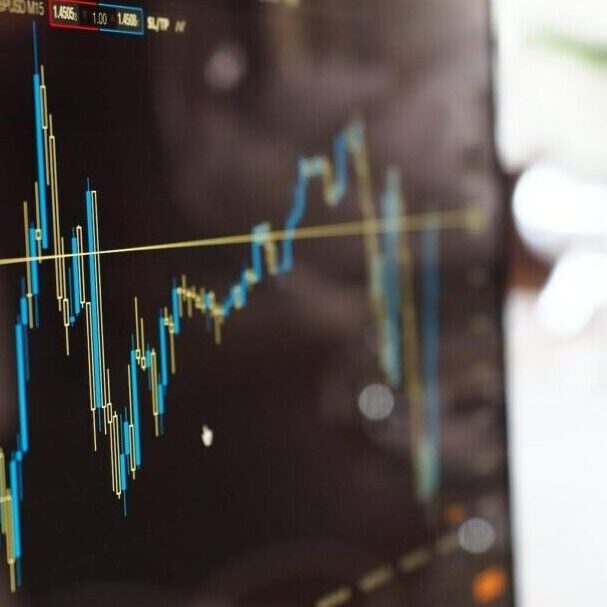Our 10 frequently asked questions about investing cover some of the core investment fundamentals, helping you improve your knowledge and build confidence when making investment decisions.
1 – What is the difference between saving and investing?
When you save money in a savings account you earn a specified percentage of interest on your money. In contrast, when you invest money in the stock market you buy a shareholding or partial ownership of a company. The company may pay shareholders a share of its profits as dividends. If the company performs well the share price goes up, increasing the value of your investment. When your investment value rises, this is termed capital appreciation.
With a savings account, you earn guaranteed income on your money in the form of interest. Stock market investments historically offer better long term returns than savings accounts, but can go up or down in value, especially in the short term.
2 – Is it better to save money in a savings account or invest in the stock market?
Deciding whether to save or invest your money depends on the time frame and the reasons for saving. Saving provides immediate access to your money, making it suitable for saving for short-term goals, such as saving for a holiday.
Investing is more volatile as share prices can go up or down, meaning you could lose money in the short term. Investing should be viewed as a wealth building strategy over the long term. When you invest, you should be looking at a minimum time frame of 5 years to help to mitigate against short-term drops in share prices.
It is a good idea to have a balance between savings and stock market investments. Before you start investing, build up an emergency savings fund of around 3 to 6 months of your expenses. Having a safety net means you won’t be forced to sell stocks during a market downturn and potentially incurring a loss to cover unexpected expenses.
3 – How much money do I need to start investing?
Quite simply, very little. Gone are the days when you needed significant amounts of capital to invest in the stock market. Online trading platforms have opened investing to everyone with an internet connection, smart phone or computer. Most investment platforms allow you to invest modest monthly amounts, avoiding large initial capital contributions.
4 – What are dividends?
Dividends are a share of the profits of a company that you have invested in. They are paid as cash and represent the income you receive for investing your money in a company. Dividends are not guaranteed, and the amount can vary depending on how well the company has performed. Not all companies pay dividends as some reinvest their profits to grow the business.
5 – What is investment risk?
Investment risk is essentially the possibility of losing money or earning less than expected when investing. There are numerous factors that impact investment risk, such as:
- Declining markets or industries
- Economic downturns, political events or global crises
- Individual companies performing badly or failing
Investment risk can be reduced by having a diversified portfolio and investing for the long term.
6 – What is investment diversification?
Investment diversification is one of the most important investment strategies. It aims to spread the inherent investment risk by investing money in different companies, asset types, industries and geographical regions. Diversification is essentially about not putting all your eggs in one basket – or not investing all your money in one company.
A diversified investment portfolio helps reduce the impact of losses from underperforming companies, as these are offset by gains from higher performing companies.
7 – What is the return on investment or ROI?
The return on investment (ROI) is the dividend income and growth in the share price, expressed as a percentage of the original amount invested. For example, you buy 50 shares of £20 each in a company, which is a total investment of £1,000. After a year, the company pays you £50 in dividends and the share price has increased to £22 a share. Your capital investment in the company is now 50 shares at £22, which equals £1,100. Over the year, you have made £150, consisting of £50 in dividends and £100 in capital growth. To calculate your return on investment, divide £150 by your initial investment of £1,000 which is ROI of 15%.
8 – What is an investment benchmark?
An investment benchmark provides a measure against which to compare the performance of an investment. This helps determine if an investment portfolio is meeting expectations. Market indexes, such as the S&P 500 and FTSE 100 are frequently used as benchmarks. The S&P 500 (Standard & Poor’s 500) consists of the largest 500 publicly traded companies in the USA, while the FTSE 100 (Financial Times Stock Exchange 100) represents the largest 100 companies on the London Stock Exchange.
Using benchmarks helps you assess and make informed investment decisions, keeping your portfolio performance on track.
9 – What is market capitalisation?
Market capitalisation is the total value of a company’s shares on the stock market, also known as the “market cap”. To calculate a company’s market capitalisation, multiply the total number of company shares by the current share price.
10 – What is pound cost averaging?
Pound cost averaging is an investment strategy where you invest smaller regular amounts into the stock market, regardless of the share price. Some shares are purchased when the price is high, and others when the share price is low. Over time, this helps reduce the impact of market volatility, as it results in an average share price. This strategy avoids making large one off purchases where you may pay a high share price and miss out on dips in the market with lower share prices.
That’s the frequently asked questions about investing covered, so now it’s over to our furry friends who represent a couple of fundamental stock market terms.


Why a bear and a bull? When stock market prices are flat or decreasing, there is a bear market, whereas a bull market happens when share prices are increasing. A tip to remember the terms, use the second letter of each animal to help you or consider their fighting styles.
- Bull – upwards share price
- Bear – equilibrium or downward share price
The analogy using a bull and bear comes from their fighting styles, where a bull pushes upwards with its horns and a bear swipes downwards with its paws.
